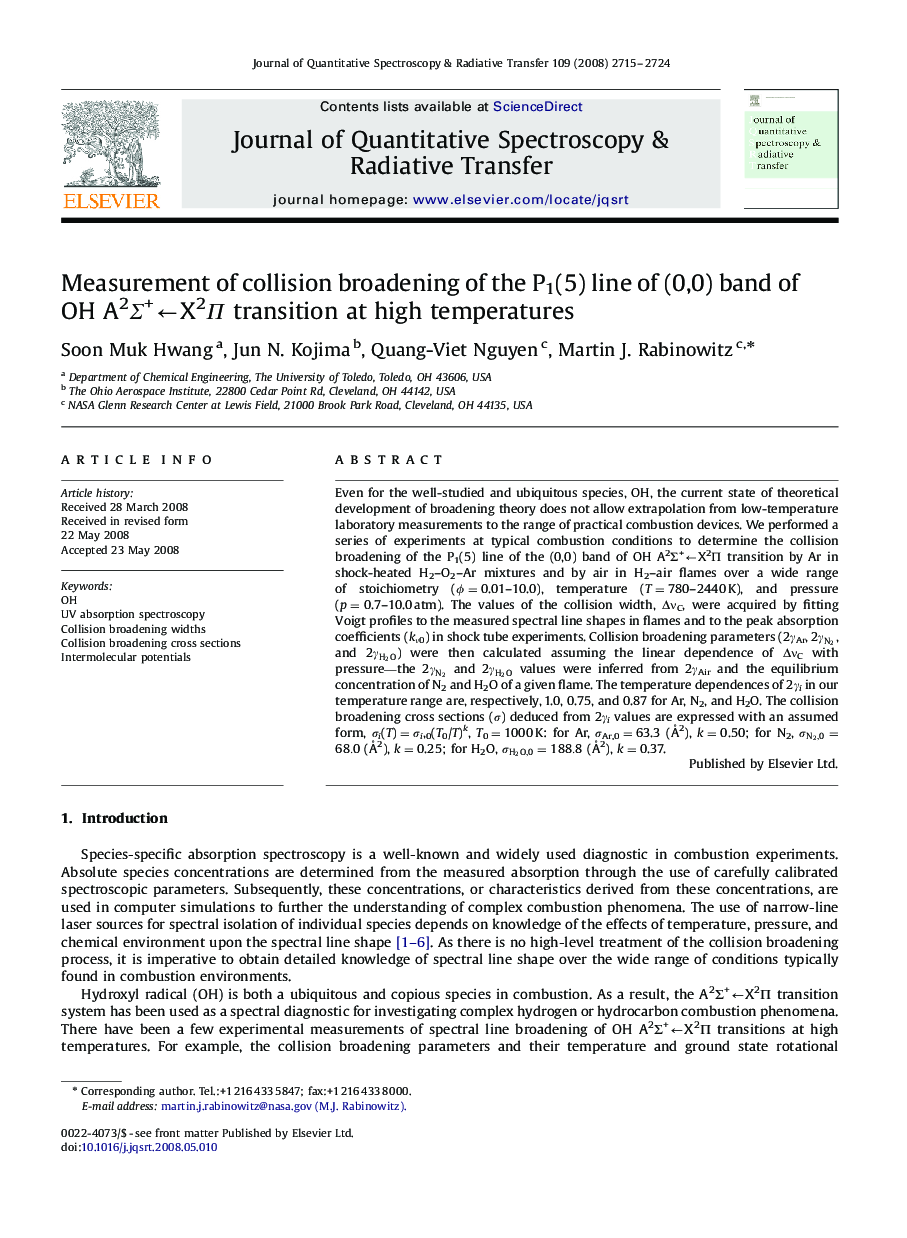| Article ID | Journal | Published Year | Pages | File Type |
|---|---|---|---|---|
| 5430283 | Journal of Quantitative Spectroscopy and Radiative Transfer | 2008 | 10 Pages |
Even for the well-studied and ubiquitous species, OH, the current state of theoretical development of broadening theory does not allow extrapolation from low-temperature laboratory measurements to the range of practical combustion devices. We performed a series of experiments at typical combustion conditions to determine the collision broadening of the P1(5) line of the (0,0) band of OH A2Σ+âX2Î transition by Ar in shock-heated H2-O2-Ar mixtures and by air in H2-air flames over a wide range of stoichiometry (Ï=0.01-10.0), temperature (T=780-2440 K), and pressure (p=0.7-10.0 atm). The values of the collision width, ÎνC, were acquired by fitting Voigt profiles to the measured spectral line shapes in flames and to the peak absorption coefficients (kν0) in shock tube experiments. Collision broadening parameters (2γAr, 2γN2, and 2γH2O) were then calculated assuming the linear dependence of ÎνC with pressure-the 2γN2 and 2γH2O values were inferred from 2γAir and the equilibrium concentration of N2 and H2O of a given flame. The temperature dependences of 2γi in our temperature range are, respectively, 1.0, 0.75, and 0.87 for Ar, N2, and H2O. The collision broadening cross sections (Ï) deduced from 2γi values are expressed with an assumed form, Ïi(T)=Ïi,0(T0/T)k, T0=1000 K: for Ar, ÏAr,0=63.3 (à 2), k=0.50; for N2, ÏN2,0=68.0 (à 2), k=0.25; for H2O, ÏH2O,0=188.8 (à 2), k=0.37.
